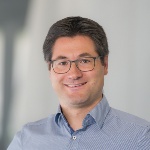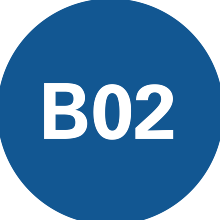People
Alixa Sonntag (Alumna)
Jan Lukas Eurich (Alumnus)
Publications
Book contributions
- Ehlers, W., Sonntag, A., & Wagner, A. (2022). On Hydraulic Fracturing in Fully and Partially Saturated Brittle Porous Material. In F. Aldakheel, B. Hudobivnik, M. Soleimani, H. Wessels, C. Weißenfels, & M. Marino (Eds.), Current Trends and Open Problems in Computational Mechanics (pp. 111–119). Springer International Publishing. https://doi.org/10.1007/978-3-030-87312-7_12
Monographs
- Sonntag, A. (2023). Partially saturated porous solids under dynamic hydraulic fracturing. Dissertation thesis, University of Stuttgart. https://doi.org/10.18419/opus-14201
- Wagner, A. (2021). Continuum Mechanics of Multicomponent Materials - Modelling, Numerics and Applications for Biological Materials in the Framework of the Theory of Porous Media. Habilitation thesis, University of Stuttgart. https://doi.org/10.18419/opus-11808
(Journal-) Articles
- Wang, J., Sonntag, A., Lee, D., Xotta, G., Salomoni, V. A., Steeb, H., Wagner, A., & Ehlers, W. (2024). Modelling and simulation of natural hydraulic fracturing applied to experiments on natural sandstone cores. Acta Geotechnica, 19, 7709–7725. https://doi.org/10.1007/s11440-024-02351-7
- Ehlers, W. (2023). A historical review on porous-media research. Proceedings in Applied Mathematics and Mechanics, 23, e202300271. https://doi.org/10.1002/pamm.202300271
- Sonntag, A., Wagner, A., & Ehlers, W. (2023). Dynamic hydraulic fracturing in partially saturated porous media. Computer Methods in Applied Mechanics and Engineering, 414. https://doi.org/10.1016/j.cma.2023.116121
- Wagner, A., Sonntag, A., Reuschen, S., Nowak, W., & Ehlers, W. (2023). Hydraulically induced fracturing in heterogeneous porous media using a TPM-phase-field model and geostatistics. Proceedings in Applied Mathematics and Mechanics, 23. https://doi.org/10.1002/pamm.202200118
- Eurich, L., Schott, R., Shahmoradi, S., Wagner, A., Borja, R. I., Roth-Nebelsick, A., & Ehlers, W. (2022). A thermodynamically consistent quasi-double-porosity thermo-hydro-mechanical model for cell dehydration of plant tissues at subzero temperatures. Archive of Applied Mechanics, 92, 529–557. https://doi.org/10.1007/s00419-021-01947-9
- Ehlers, W., Sonntag, A., & Wagner, A. (2021). Hydraulic fracturing under fully and partially saturated conditions. Published in Accordance with the Decision of the Academic Council of the State Higher Educational Institution ‘Donetsk National Technical University’, 1, 47–51. https://doi.org/10.31474/2074-7888-2021-1-47-51
- Sonntag, A., Wagner, A., & Ehlers, W. (2021). Modelling fluid-driven fractures for partially saturated porous materials. Proceedings in Applied Mathematics and Mechanics, 20. https://doi.org/10.1002/pamm.202000033
- Wagner, A., Eggenweiler, E., Weinhardt, F., Trivedi, Z., Krach, D., Lohrmann, C., Jain, K., Karadimitriou, N., Bringedal, C., Voland, P., Holm, C., Class, H., Steeb, H., & Rybak, I. (2021). Permeability Estimation of Regular Porous Structures: A Benchmark for Comparison of Methods. Transport in Porous Media, 138, 1–23. https://doi.org/10.1007/s11242-021-01586-2
- Ehlers, W., & Wagner, A. (2019). Modelling and simulation methods applied to coupled problems in porous-media mechanics. Archive of Applied Mechanics, 89, 609–628. https://doi.org/10.1007/s00419-019-01520-5
Research
About this Project
The overall goal of research project B02 is the modelling and simulation of coupled processes for fluid-driven fracturing in fully and partially saturated porous media on the REV (macroscopic) scale. Methodically, we use the Theory of Porous Media (TPM) as framework for a rigorous description of the coupled behaviour of the multi-phasic material. Therein, an embedded phase-field approach is used for a diffuse interface description of fracturing processes. This allows to model coupled fluid-flow phenomena over a transition region as well as free flow and porous media flow in a single-domain approach. In the TPM-phase-field approach, this is realised by the momentum equation of the liquid which is able to switch between a Darcy-type or Navier-Stokes-type equation, depending on the local fracturing state of the solid. We aim to develop modelling and simulation contributions for applications in terms of combined numerical-experimental investigations within the SFB 1313.
Results
Funding Period 1
As the most significant contribution in FP 1, we developed a thermodynamically consistent ternary TPM phase-field model consisting of a porous solid containing a gaseous and a liquid phase as its pore content. This allowed to simulate the coupled behaviour of fracture propagation and fluid flow, see Figure 1.
We were especially interested in the influence of the gases compressibility on the fracture initiation in hydraulic fracturing problems in partially saturated porous materials and were able to show that the fracturing process is clearly delayed in comparison to a fully saturated porous material, see Figure 2. Moreover, within the Task Force “Mathematical and Computational Models” we jointly established a benchmark for permeability estimation methods in regular porous structures.
Funding Period 2
In the current FP 2, we are interested in three main research questions, (i) the TPM-phase-field model’s applicability, (ii) the influence of a heterogeneous solid skeleton on the fracturing behaviour and (iii) the enhancement of the existing models towards the inclusion of dissolved components in fracturing porous media. For (i), we have carried out modelling and simulation of hydraulic fracturing experiments on rock (sandstone) cores and microfluidic experiments for non-evolving fractures in porous media in a combined numerical-experimental approach investigated with B05 and Z02, see Figure 3 and Figure 4. For (ii), we have studied hydraulic fracturing in heterogeneous porous materials with B04, considering geostatistics and its effect on fracture propagation. For (iii), we are currently working on thermodynamically consistent model developments to consider dissolved components.
Future Work
In a potential FP 3, we want to address novel research questions, building on the methods developed so far. We are interested in the influence of different fracture topologies on the flow behaviour in the diffuse interface (transfer region) between fractures and porous domains. This straightforward study will strongly benefit from the recent developments and is again building on microfluidic experiments investigated in Z02. Together with A03, we will study interfaces in single-domain and multi-domain approaches. Moreover, we aim to enhance our numerical simulations for convenient statistical analyses with B04 by the implementation of suitable preconditioners with A03, processing the specific coupled systems resulting from the single-domain TPM-phase-field models. We will develop methodical approaches to describe drying processes in fracturing porous media with saline pore fluids and contribute to the overarching Salt Vision of the SFB 1313. Furthermore, we will study the role of mechanical deformations in fractured and fracturing porous media, which we will investigate together with B05, B01 and Z02. Finally, we will head towards the description of fatigue fracture growth in bio-cement together with the projects C04 and B05.
International Cooperation
Together with our collaborators V. A. Salomoni and G. Xotta from the University of Padua, Italy, from where a doctoral researcher visited us for a research stay, we published a joint paper on the estimation of fracture resistance of dense (low) permeable sandstone. This investigation was again a combined numerical-experimental work together with B05 and Z02. Furthermore, we will gain new insights from the research stay abroad of our doctoral researcher at the research facility IMPRES in Manchester, hosted by Mercator fellow V. Niasar.
For further information please contact

Arndt Wagner
Dr.-Ing.Principal Investigator, Research Project B02, Project WIKO
[Image: Max Kovalenko]






